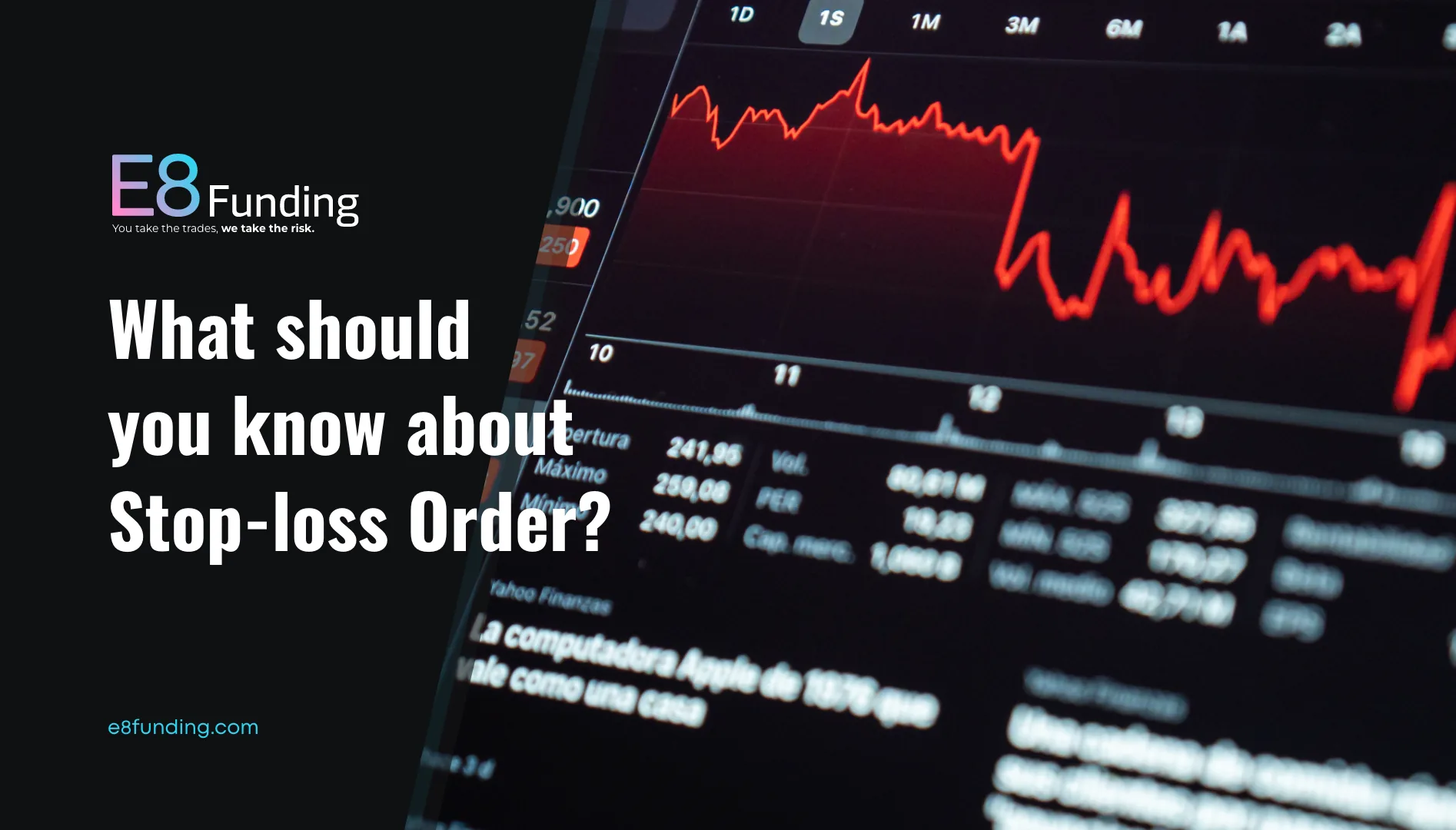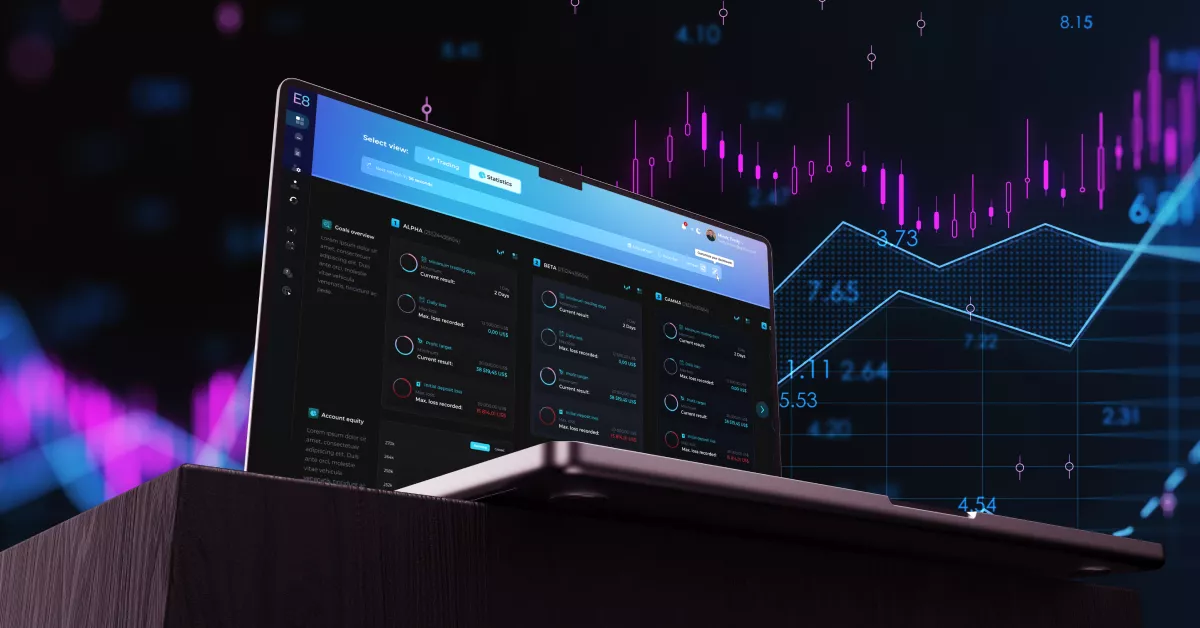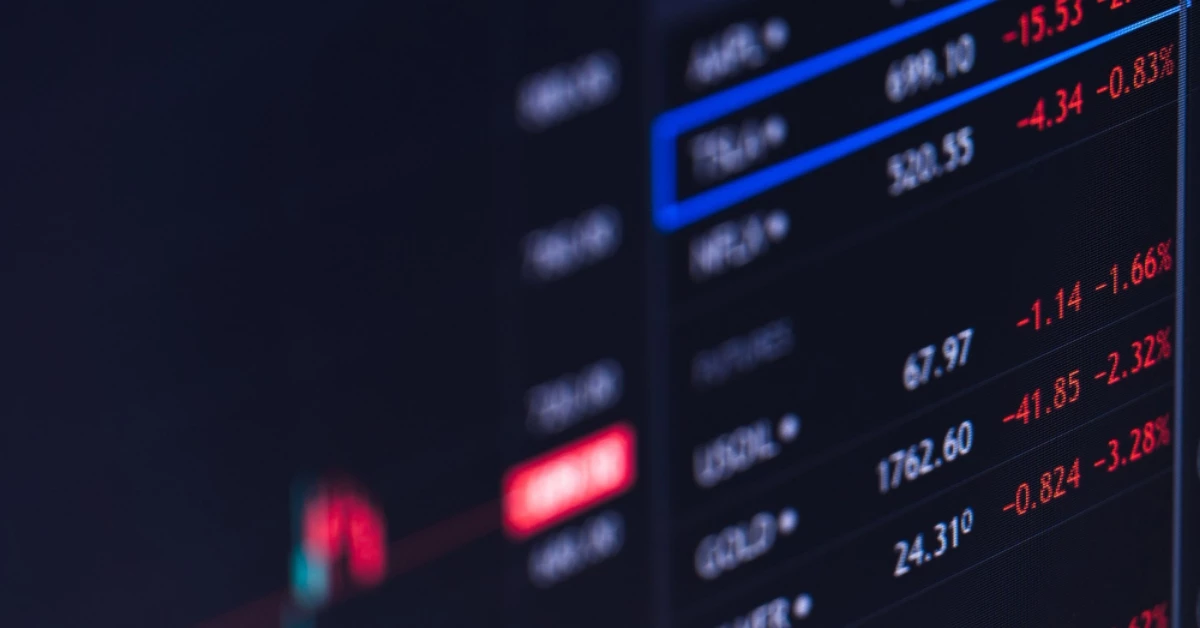Avoid These Common Trading Mistakes: Guide for All Traders
Trading isn’t a get-rich-quick scheme. It’s a discipline, a craft honed over time through experience, knowledge, and, yes, even a few missteps along the way. The path to becoming a consistently profitable trader is paved with both triumphs and setbacks. The key is to learn from the latter and use those lessons to fuel your growth. Think of it like learning to ride a bike – you’re bound to fall a few times, but each tumble teaches you something valuable about balance and control. In the world of trading, these “tumbles” often come in the form of common mistakes that many new traders make. But fear not, for these mistakes are not fatal. By understanding and proactively addressing them, you can significantly accelerate your learning curve and pave the way for a more rewarding trading journey. Let’s explore these common pitfalls and discover the strategies that will help you stay upright and confidently navigate the markets.
Mistake 1: Overtrading
It’s easy to fall into the trap of believing that more trades equals more profits. This couldn’t be further from the truth. Overtrading, or the excessive buying and selling of assets, is a common pitfall for new traders, often fueled by excitement, impatience, or the fear of missing out (FOMO).
The Danger of Overtrading
- Increased Costs: Every trade comes with associated costs, such as commissions and spreads. Overtrading can significantly eat into your profits, leaving you with less than you intended, even if some of your trades are successful.
- Emotional Exhaustion: Constantly monitoring the markets and making rapid-fire decisions can lead to mental tiredness and burnout, clouding your judgment and increasing the likelihood of impulsive trades.
- Missed Opportunities: Overtrading can cause you to miss out on potentially profitable trades by tying up in less promising positions. It’s like trying to juggle too many balls at once – some are bound to drop.
- Impaired Decision-Making: When you’re constantly in the market, it’s difficult to step back and objectively analyze your trades. This can lead to poor decision-making and a tendency to chase losses.
Strategies to Avoid Overtrading
- Set a Trading Plan and Stick to It: A well-defined trading plan outlines your entry and exit points, risk tolerance, and profit targets. It acts as a roadmap, helping you avoid impulsive decisions.
- Limit Your Daily or Weekly Trades: Set a realistic limit on the number of trades you’ll make within a given timeframe. This forces you to be more selective and focus on high-probability setups.
- Embrace Patience: Trading is not a sprint, it’s a marathon. Successful traders understand the importance of waiting for the right opportunities, even if it means sitting on the sidelines for a while.
- Take Breaks: Stepping away from the markets periodically allows you to clear your head, recharge, and return with a fresh perspective.
Remember, trading is a game of quality, not quantity. By focusing on making fewer, well-informed trades, you can increase your chances of success and avoid the pitfalls of overtrading.
Mistake 2: Emotional Trading
Trading is often described as a battle between logic and emotion. While a sound trading strategy is built on rational analysis and risk management, emotions like fear and greed can easily hijack the decision-making process, leading to impulsive and often detrimental actions.
The Emotional Rollercoaster
- Fear: The fear of losing the trade can cause traders to hesitate when they should enter a new one or exit a profitable position prematurely. It can also lead to panic selling during market downturns.
- Greed: The desire for quick profits can push traders to take on excessive risk or chase after volatile assets without proper analysis. This can result in significant losses and a sense of regret.
- Hope: When a trade goes against you, hope can prevent you from cutting your losses and exiting the position. This can lead to even greater losses as you cling to the hope that the market will turn in your favor.
- Regret: Regret can arise from missed opportunities or poor trading decisions. It can lead to impulsive actions in an attempt to make up for past mistakes, further compounding the problem.
Taming the Emotional Beast
- Develop a Trading Plan and Stick to It: A well-defined trading plan acts as a buffer against emotional impulses. It provides a clear roadmap for your trades, helping you stay focused and disciplined.
- Practice Mindfulness: Mindfulness techniques, such as meditation or deep breathing exercises, can help you become more aware of your emotions and manage them effectively.
- Maintain a Trading Journal: Recording your trades and the emotions you experienced during each one can help you identify patterns and triggers for emotional trading.
- Take Breaks: When you feel overwhelmed or emotionally charged, step away from the markets. Take a walk, listen to music, or engage in any activity that helps you relax and clear your head.
- Seek Support: Talking to a mentor, or fellow trader in the community, they can provide valuable insights and support in managing the emotional challenges of trading.
Trading is not just about numbers and charts; it’s also about understanding and managing your emotions. By developing emotional intelligence and cultivating discipline, you can make more rational decisions and avoid the pitfalls of emotional trading.
Mistake 3: Lack of a Trading Plan
Imagine embarking on a road trip without a map or GPS. You might have a general idea of where you want to go, but without a clear route, you’re likely to get lost, waste time, and potentially encounter unexpected detours. The same principle applies to trading. Entering the markets without a well-defined trading plan is akin to navigating without a map – a recipe for confusion, frustration, and ultimately, financial losses.
Why a Trading Plan is Essential
- Clarity and Direction: A trading plan provides a clear framework for your trading activities, outlining your goals, strategies, risk tolerance, and preferred asset classes. It helps you stay focused and avoid impulsive decisions.
- Discipline and Consistency: A trading plan acts as a guide, keeping you on track even when the markets become volatile or your emotions run high. It helps you maintain discipline and consistency in your approach.
- Risk Management: A trading plan incorporates risk management strategies, such as position sizing and stop-loss orders, to protect your capital and limit potential losses.
- Adaptability: While a trading plan provides structure, it should also be flexible enough to adapt to changing market conditions. Regularly reviewing and adjusting your plan is essential for long-term success.
Key Components of a Trading Plan
- Trading Goals: Define your short-term and long-term objectives. Are you looking for consistent income, capital appreciation, or a combination of both?
- Trading Style: Identify your preferred trading style, such as day trading, swing trading, or position trading. This will help you choose appropriate strategies and timeframes.
- Risk Tolerance: Determine how much risk you’re comfortable taking on each trade and overall. This will influence your position sizing and stop-loss placement.
- Entry and Exit Strategies: Outline your criteria for entering and exiting trades, based on technical or fundamental analysis, or a combination of both.
- Record Keeping: Maintain a trading journal to track your trades, analyze your performance, and identify areas for improvement.
A trading plan is not set in stone. It’s a dynamic document that should evolve as you gain experience and refine your strategies. By creating and adhering to a well-structured trading plan, you’ll be better equipped to navigate the markets with confidence and achieve your trading goals.
Creating a trading plan and maintaining a trading journal are crucial aspects of successful trading, especially for beginners. We have dedicated articles that delve deeper into these topics. We highly recommend them to gain further insights and guidance. Click here to chceck out.
Mistake 4: Chasing Losses
In trading, losses are inevitable. Even the most seasoned professionals experience losing streaks. However, how you react to those losses can significantly impact your overall trading performance. One of the most common and destructive reactions is chasing losses, also known as revenge trading. This involves trying to recoup losses quickly by taking on increasingly risky trades, often driven by frustration, anger, or a sense of wounded pride.
The Downward Spiral of Chasing Losses
- Increased Risk-Taking: When chasing losses, traders often abandon their carefully crafted trading plans and risk management strategies, opting for high-risk, high-reward trades in a desperate attempt to recover their losses quickly.
- Emotional Turmoil: Chasing losses is often fueled by intense emotions, such as anger, frustration, and fear. These emotions can cloud judgment and lead to impulsive decisions, further exacerbating the problem.
- Account Burnout: The combination of increased risk-taking and emotional decision-making can lead to a cascade of losses, potentially wiping out your trading account and leaving you in a worse position than before.
- Loss of Confidence: Repeatedly chasing losses can destroy your confidence and create a cycle of self-doubt, making it even more difficult to regain your footing in the markets.
Breaking the Cycle
- Accept Losses as Part of the Game: Losses are an inevitable part of trading. Accepting this reality and learning from your mistakes is crucial for long-term success.
- Stick to Your Trading Plan: When you experience a loss, resist the urge to deviate from your trading plan. Stick to your pre-defined strategies and risk management principles.
- Take a Break: If you find yourself becoming emotionally charged after a loss, step away from the markets. Give yourself time to cool down and regain your composure before making any further trading decisions.
- Focus on the Long Term: Don’t let short-term setbacks derail your long-term trading goals. Focus on consistent execution and risk management, and the profits will follow.
- Seek Support: If you’re struggling with the emotional impact of losses, don’t hesitate to seek support from a mentor, or fellow trader.
Chasing losses is a self-destructive behavior that can quickly spiral out of control. By adopting a disciplined approach and focusing on long-term profitability, you can avoid this trap and build a sustainable trading career.
Mistake 5: Ignoring Risk Management
Risk is an ever-present companion. While the potential for profits is enticing, it’s crucial to remember that every trade carries the possibility of loss. Ignoring risk management is akin to playing with fire – you might enjoy the warmth for a while, but eventually, you’re bound to get burned.
The Importance of Risk Management
- Balance Preservation: The primary goal of risk management is to protect your account balance. By implementing risk management strategies, you can ensure that even a string of losses won’t wipe out your account.
- Consistent Performance: Risk management helps you maintain consistency in your trading performance by limiting the impact of individual losses. This allows you to stay in the game for the long haul and capitalize on profitable opportunities when they arise.
- Emotional Control: Knowing that you have a risk management plan in place can help you stay calm and collected during volatile market conditions. This prevents emotional decision-making and impulsive trades.
- Confidence and Discipline: A well-defined risk management strategy instills confidence and discipline in your trading approach. It allows you to take calculated risks without jeopardizing your overall well-being.
Key Risk Management Techniques
- Position Sizing: Determine the appropriate size of each trade based on your risk tolerance and account size. Avoid risking too much on any single trade.
- Stop-Loss Orders: Set stop-loss orders to automatically exit a trade if it moves against you by a predetermined amount. This helps limit potential losses and protect your capital.
- Diversification: Spread your risk across different asset classes and markets. This reduces the impact of any single loss and increases the potential for gains in other areas.
- Risk-Reward Ratio: Assess the potential reward of a trade in relation to its risk. Aim for trades with a favorable risk-reward ratio, where the potential profit outweighs the potential loss.
- Regular Review: Continuously monitor and adjust your risk management strategies as market conditions change and your trading experience grows.
Risk management is not about eliminating risk entirely; it’s about managing it effectively. By incorporating sound risk management practices into your trading approach, you can protect your capital, maintain consistency, and increase your chances of long-term success in the markets. Find out more about Risk Management in our article.
Mistake 6: FOMO (Fear of Missing Out)
In today’s hyper-connected world, where news and market trends spread like wildfire, it’s easy to fall prey to FOMO – the Fear of Missing Out. This phenomenon, fueled by social media, news headlines, and the constant buzz surrounding the markets, can lead traders to make impulsive decisions based on hype and speculation rather than sound analysis and risk management.
The Dangers of FOMO
- Impulsive Trading: FOMO can drive traders to enter trades without proper research or planning, simply because they fear missing out on potential profits. This often leads to buying high and selling low, resulting in losses.
- Herd Mentality: FOMO can create a herd mentality, where traders blindly follow the crowd without considering their own risk tolerance or trading goals. This can lead to overcrowded trades and increased volatility.
- Overconfidence: When a trade driven by FOMO turns profitable, it can create a false sense of confidence and invincibility. This can lead to taking on excessive risk and ignoring warning signs, ultimately resulting in losses.
- Missed Opportunities: Ironically, FOMO can cause traders to miss out on genuine opportunities by focusing on short-term trends and hype. By chasing the latest hot stock or cryptocurrency, traders might neglect other potentially profitable assets.
Overcoming FOMO
- Focus on Your Trading Plan: Stick to your pre-defined trading plan and avoid getting swayed by market noise or the latest trends. Remember, your plan is your roadmap to success.
- Do Your Research: Before entering any trade, conduct thorough research and analysis. Understand the fundamentals of the asset, its potential risks, and its long-term prospects.
- Avoid Herd Mentality: Don’t blindly follow the crowd. Make your own decisions based on your analysis and risk tolerance.
- Stay Informed, But Don’t Get Overwhelmed: Stay abreast of market developments, but don’t let the constant stream of news and opinions dictate your trading decisions.
- Practice Patience: Remember, there will always be another opportunity. Don’t feel pressured to jump into every trade. Wait for setups that align with your trading plan and risk management strategies.
FOMO is a powerful emotion that can derail even the most disciplined traders. By recognizing its influence and implementing strategies to counteract it, you can make more rational decisions and avoid the pitfalls of impulsive trading. Remember, trading is a marathon, not a sprint. Focus on the long term, stay true to your plan, and let FOMO be your guide to opportunities, not your downfall.
Embrace the Learning Curve, Trade Wisely
Trading, like any worthwhile endeavor, is a journey of continuous learning and growth. Mistakes are inevitable, especially for those new to the markets. However, by recognizing these common pitfalls and proactively implementing the strategies discussed in this article, you can significantly reduce your risk of losses and pave the way for a more successful trading experience.
Remember:
- Overtrading can lead to financial losses and emotional exhaustion. Set limits, stick to your plan, and embrace patience.
- Emotional trading can cloud your judgment and lead to impulsive decisions. Practice mindfulness, maintain a trading journal, and take breaks when needed.
- Lack of a trading plan is like navigating without a map. Create a well-defined plan and adhere to it, even during turbulent market conditions.
- Chasing losses is a destructive cycle. Accept losses as part of the game and focus on long-term profitability.
- Ignoring risk management is akin to playing with fire. Implement sound risk management strategies to protect your capital and ensure consistency.
- FOMO can lead to impulsive decisions and missed opportunities. Stay true to your plan, do your research, and avoid herd mentality.
By learning from your mistakes, staying disciplined, and continuously refining your skills, you can navigate the markets with confidence and achieve your trading goals. Remember, trading is a marathon, not a sprint. Embrace the learning curve, trade wisely, and enjoy the journey.
Article topics
Trade with E8 Markets
Start our evaluation and get opportunity to start earning.Disclaimer
The information provided on this website is for informational purposes only and should not be construed as investment advice. Always conduct your own research and consult with a qualified financial advisor before making any investment decisions. We do not endorse or promote any specific investments, and any decisions you make are at your own risk. This website and its content are not responsible for any financial losses or gains you may experience.
Please consult with a legal professional to ensure this disclaimer complies with any applicable laws and regulations in your jurisdiction.








